|
UC 11384
|
UC 11383
|
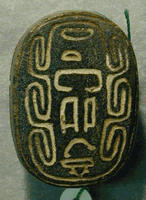 |
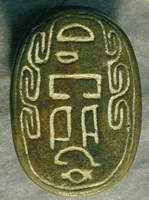 |
Section 5: Identifying the administrators of the Second Intermediate Period
Summary
of titles attested on back-type 10
Note problems with simplified form: even in early 20th century a name and title scarab fetched a high price (there is a comment by Petrie on this in one of his 'Journals' or semi-official letters home), so the excavated corpus must be the backbone of research.
Example of the problem with unprovenanced scarabs: the scarab series of nbt-pr ii-ib UC 11384, and UC 11383 with inverted nb hieroglyph
|
UC 11384
|
UC 11383
|
 |
 |
UC 11393 HB imy-r gs-pr Hor true of voice - top broken away, so design and back-type uncertain
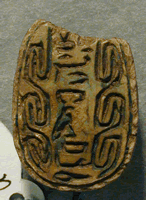
UC 11445 imy-r nbyw Siptah (curious writing of nbw, but note connection between craft and Ptah)
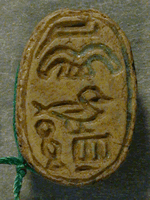
UC 11451 HB imy-r sxtyw smrti 'king's sealbearer, overseer of marshdwellers Semerti' - note the foreign name, and the association between Delta margin and sekhet (following Berlev on Eloquent forager/Bedu/gypsy/Wadi-Natrun-dweller); note too a parallel in Fitzwilliam E Sc 29 with same titles, and name smrti-hr - so adding the Semitic element -hr
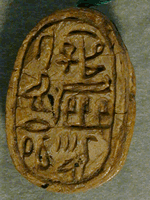
The Martin back-type framework does not separate late Middle Kingdom from Second Intermediate Period officials, as early and late types are both already found for Senebsumai (dated prosopographically to the period before king Neferhotep I of mid-Dynasty 13). Prosopography also does not help, as dated examples depend on links to royal names, and these links are plentiful only in the period from king Sekhemrakhutawy Amenemhat-Sobekhotep (if he is the king in Papyrus Boulaq 18) to Sobekhotep IV, i.e. early to mid-Dynasty 13.
Note that we are also poorly
informed of the high officials in the earlier part of Dynasty 13, and even of
those at the court of Amenemhat III;
the highest officials are scarce in both the quarrying inscriptions and the
Lahun papyri, and the court cemeteries at Hawara are heavily damaged and little
explored (though see now the survey produced by the team of Inge Ytterhoeven).
Further expert research into
the scarabs, including the orthography and epigraphy of the hieroglyphic inscriptions,
is required to refine dates for the attested officials and their titles.
Three
late examples of the title king's acquaintance?
(1) an example dated by Daphna Ben-Tor to Second Intermediate Period by base-design is Martin 1971: no.1312, pl.11.21, in a private collection (formerly Fraser, von Bissing collections), king's acquaintance Sahathor, back-type 10
(2) king's acquaintance rdi-rdi (or ra-ra?) Cairo Martin 1971: no.903, pl.41.16 - a name and title scarab, or an echo of name and titles scarabs (cf the sbk -.. nb im3h example?), back-type 10
(3) UC 11478 king's acquaintance Hemsha - note the foreign-sounding (Semitic?) name, back-type 6
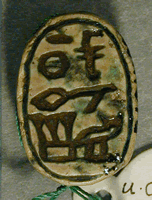
Note the association of titles
king's acquaintance and treasurer under Iykhernefret (Amenemhat
III), Senembsumai (before Neferhotep
I), and most strongly under Senebi (Neferhotep
I-Sobekhotep IV)
Centres of scarab production
Provisionally it may be argued that no such centre was located in Upper Egypt before the New Kingdom (about 1550-1069 BC); in Lower Egypt, contenders include beside the kingship centres Tell el-Daba and Itjtawy, Memphis, where at least Late Period scarab production is documented archaeologically from scarab blanks, and Heliopolis, city of the god behind the scarab.
Copyright © 2002 University College London. All rights reserved.